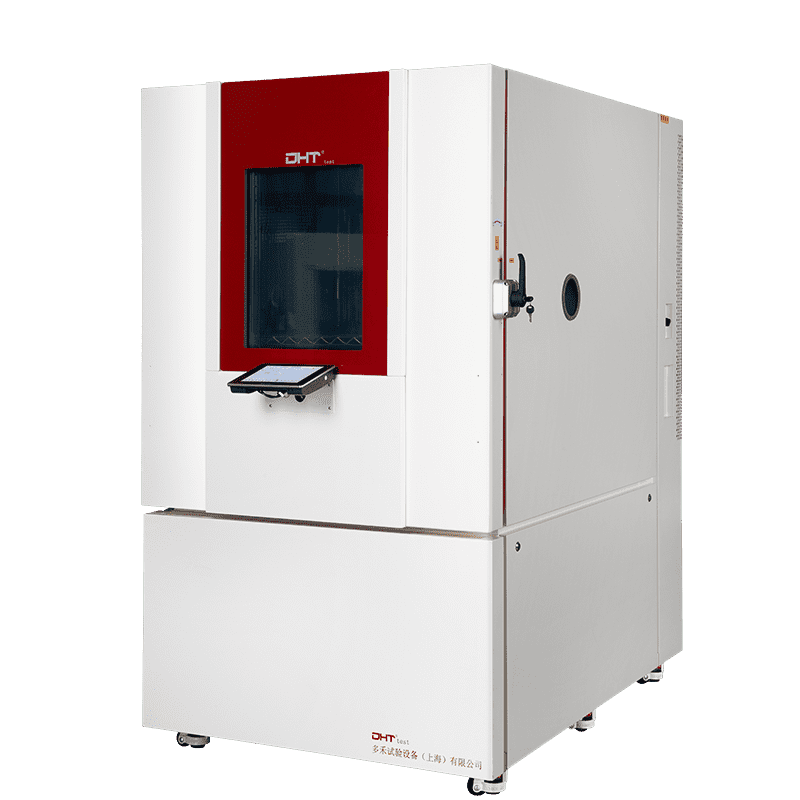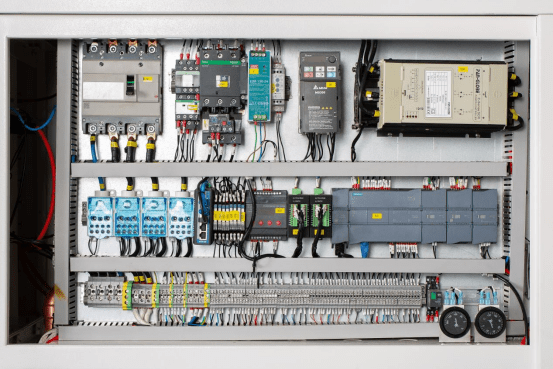Written by Robin
Senior Engineer, Doaho Test (DHT®)
In fields such as environmental testing, precision manufacturing, pharmaceutical storage, and new material research, temperature control equipment plays a critical role in ensuring stable testing and production processes. Whether it is the temperature regulation of a test chamber or the storage and transportation of products under specific temperature conditions, cooling and refrigeration systems are indispensable.
Among these systems, the industrial chiller and the industrial freezer are often mentioned, yet many users still confuse their concepts, functions, and application scenarios.
This article will explore their differences in terms of operating principles, temperature ranges, structural features, and typical applications—helping you make an informed choice when selecting equipment.
Concept Clarification: The Core Difference Between Cooling and Refrigeration
Industrial Chiller
An industrial chiller is designed to supply circulating chilled water to process equipment or controlled environments. Its primary function is to remove the heat generated during equipment operation, maintaining an optimal working temperature.
Chillers typically use a refrigeration cycle composed of a compressor, condenser, evaporator, and expansion valve, but they deliver relatively high-temperature chilled water (generally between 5°C and 30°C).
In the field of test chambers, industrial chillers are often used to provide cooling capacity for high/low-temperature chambers, constant temperature and humidity chambers, and similar equipment—ensuring stable temperature control during rapid cooling processes.
Industrial Freezer
An industrial freezer, on the other hand, is a refrigeration system that lowers the temperature of an environment or material to a much lower level—often down to 0°C or even below -80°C. It focuses on low-temperature storage and long-term temperature maintenance, rather than instantaneous cooling.
For example, freezers for vaccines can maintain storage conditions at -20°C or -70°C for extended periods, ensuring vaccine stability and safety.
In industrial applications, industrial freezers are widely used for storing biological samples, pharmaceuticals, special chemicals, and materials requiring deep-freeze preservation.
Differences in Temperature Range and Cooling Objectives
Chiller Temperature Range
- Operating range: typically +5°C to +30°C. Some specialized models can cool below 0°C but are not suitable for deep-freeze storage.
- Primary function: removing heat during equipment operation to maintain stable process or testing conditions.
Freezer Temperature Range
- Operating range: from below 0°C down to -20°C, -40°C, or even -86°C.
- Primary function: long-term low-temperature preservation of materials or samples, rather than cooling process water in real time.
Structural and System Design Differences
Although both chillers and freezers rely on refrigeration cycles, their design and configuration differ significantly.
Chiller Features
- Refrigerant system: Most applications can be met with a single-stage compression cycle.
- Heat transfer medium: Circulating water or glycol-water solutions, cooling the target equipment via a heat exchanger.
- Control accuracy: High temperature control precision (±0.5°C to ±1°C), ideal for processes requiring rapid and precise temperature adjustments.
Freezer Features
- Refrigerant system: Ultra-low-temperature models may use two-stage compression or cascade refrigeration technology.
- Cooling method: Directly cools the storage space or storage medium, rather than using circulating water.
- Structural characteristics: Thick insulation and high sealing performance to minimize external heat intrusion and maintain stable low temperatures over long periods.
Key Differences in Application Scenarios
Typical Chiller Applications
- Environmental test chamber auxiliary cooling: Provides extra cooling capacity during rapid temperature change tests or high-temperature aging tests, accelerating the cooling rate.
- Laser and electronics cooling: Prevents overheating in precision electronics by maintaining stable chilled water temperatures.
- Industrial process temperature control: Essential for processes such as plastic molding, chemical reactions, and metalworking.
Typical Freezer Applications
- Pharmaceutical and biological storage: Vaccine freezers ensure safe storage and transportation temperatures for vaccines.
- Scientific research sample preservation: Critical in life science laboratories for storing cells, plasma, and other sensitive samples.
- Special material storage: Certain chemicals and composite materials retain their performance longer under low-temperature conditions.
Combined Use in the Test Chamber Industry
In environmental testing equipment, chillers and freezers are not mutually exclusive—they can work together:
- The chiller is usually paired directly with the test chamber to provide continuous cooling during testing, ensuring stable temperature transitions.
- The freezer is used before or after testing to store samples at low temperatures, preventing performance changes due to temperature fluctuations outside test conditions.
For example, in the thermal cycling test of electric vehicle battery packs, a chiller manages cooling and temperature control during testing, while after the test, the battery samples may be stored in an industrial freezer for subsequent analysis.
Selection Guide: How to Choose the Right Equipment
Define the temperature requirement
- If the goal is to maintain stable chilled water temperatures above 0°C, choose a chiller.
- For deep-freeze sample preservation, an industrial freezer is essential.
Consider temperature control precision and stability
- If the process is sensitive to temperature fluctuations, prioritize a high-precision chiller.
- For sample preservation, focus on low-temperature holding capacity and insulation performance.
Match with existing systems
- For test chamber users, match the chiller’s cooling capacity to the chamber’s refrigeration needs.
- For pharmaceutical or research users, evaluate freezer volume, temperature range, and sealing performance.
Conclusion
While both industrial chillers and industrial freezers fall under the category of refrigeration equipment, they differ fundamentally in temperature range, functional purpose, structural design, and application scenarios.
The chiller is the “dynamic temperature control expert,” providing real-time cooling and precise adjustment, whereas the freezer is the “low-temperature guardian,” dedicated to long-term, stable preservation in deep-freeze conditions.
For test chamber users, understanding the difference between these two systems helps in creating an optimal configuration for both testing and storage—enhancing efficiency and ensuring reliable results. Whether it’s a chiller supplying continuous cooling during testing or an industrial freezer safeguarding critical samples, choosing the right system is key to achieving maximum performance.
If you are uncertain about equipment selection or need high-performance cooling solutions for test chambers, pharmaceutical storage, or industrial production, contact DHT®. We provide tailored temperature control solutions based on your industry requirements—helping you achieve more efficient and reliable testing and production outcomes.
FAQ
What is the main difference between an industrial chiller and an industrial freezer?
An industrial chiller is designed to remove heat from process equipment or environments by circulating chilled water, typically operating between +5°C and +30°C. It focuses on real-time cooling and precise temperature control. An industrial freezer, on the other hand, is built for deep low-temperature storage—often 0°C to as low as -86°C—aimed at preserving samples, pharmaceuticals, or materials over the long term.
When should I choose a chiller over a freezer for my application?
Choose a chiller if your goal is to maintain stable chilled water temperatures above 0°C for processes such as environmental testing, electronics cooling, or industrial manufacturing. Opt for a freezer if you require deep-freeze storage of sensitive materials, such as biological samples or vaccines, where temperatures may need to reach -20°C, -40°C, or even -80°C.
Can an industrial chiller and industrial freezer be used together?
Yes. In test chamber applications, a chiller can provide continuous cooling during the testing process to ensure stable temperature control, while a freezer can be used before or after testing to store samples at low temperatures—preventing performance changes due to temperature fluctuations.


